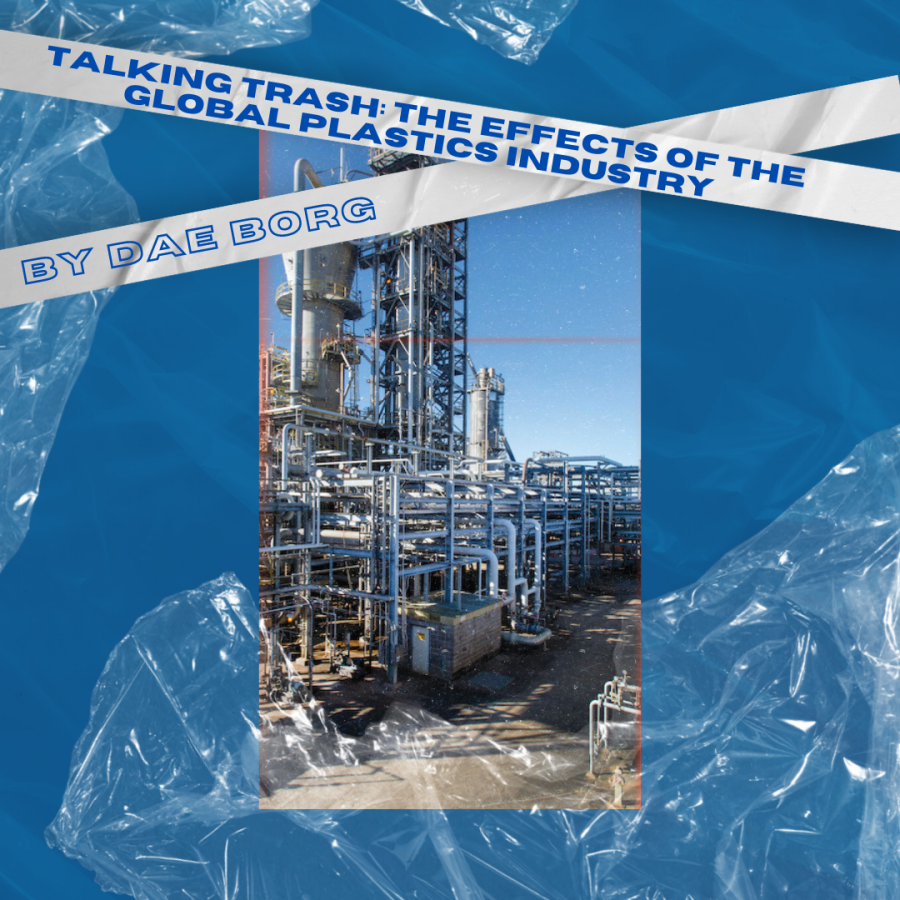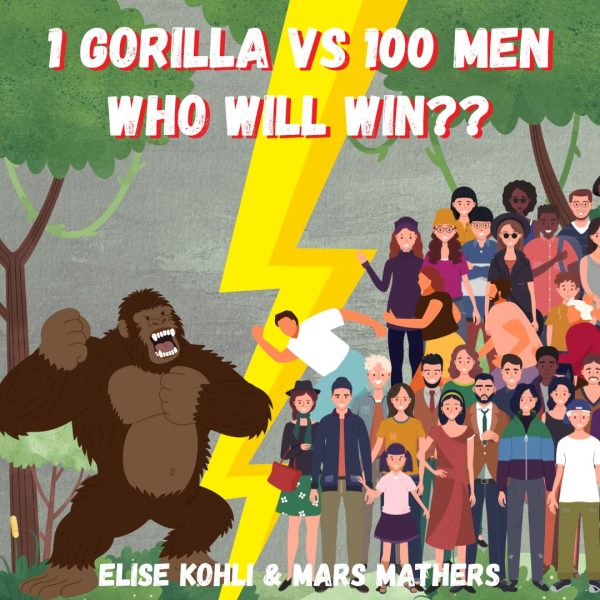Talking Trash: The Effects of the Global Plastics Industry
In a world run by large corporations and billionaires, our planet and our people are suffering, and one of the largest contributions to this is the global plastics industry. Whether it’s microplastics in our water, environmental racism, or the facade of recycling, this is a problem that is greater than we ever thought—and it’s growing daily.
The global plastic market size is estimated to increase by approximately 3% yearly, with the overall market expanding from 502 billion U.S. dollars in 2016 to 579.7 billion in 2020. Global plastic production also increased from about 270 million metric tons of plastic in 2010 to 367 million tons in 2019. Moreover, researchers from the University of Georgia, the University of California, Santa Barbara and Sea Education Association discovered that by 2015, humans had produced a total of about 8.3 billion metric tons of plastic, which is equivalent to the weight of 25,000 Empire State Buildings. All things considered, why are plastic products so high in demand in today’s society, and how much plastic is hidden behind the mask of the world’s ginormous advertising industry?
The biggest problem with plastic is its inability to break down. This means that virtually every piece of plastic that has ever been made still exists, and it is extremely detrimental to the future of our planet, affecting the health of the environment and all the biodiversity within it. However, by allowing people an easy and cheap way to store and protect items, plastic has become one of the most profitable industries in the world. People continue to find a need for plastics, using them in their daily lives, and as long as this remains true, there is no end in sight for plastic production. Nonetheless, plastics can come in forms that most people aren’t aware of, especially due to the lack of information released by companies about their products and what they are made of. Some lesser-known examples of products that contain plastic include tea bags, clothing, soda cans, or jar lids.
Even though there are all these products that contain plastic, the existence of them as a whole isn’t what is causing the most damage to the environment and our health. What is actually causing this lies in the genuine “breaking down” of plastics, which is when they are deteriorated just enough through weathering or photodegradation to leave behind tiny fragments of plastic, called “microplastics.” These are found essentially everywhere, being consumed by people and other organisms all around the world through the food we eat, the water we drink, and the air we breathe. There are several harmful health effects that result from the consumption of microplastics, such as increased risk of cancer, problems with reproduction, and so many more–and there isn’t much we can do to avoid it.
The plastic production facilities also release toxic chemicals, which often disproportionately affect BIPOC communities, as many are forced to live right next to these sites. This puts BIPOC living in these areas at a much higher risk of death and chronic health problems due to their increased exposure to the toxic chemicals that are released from the facilities.
With all these problems in mind, what would happen if we just stopped producing new plastics and switched to completely recycled products? Unfortunately, it’s more complicated than this. Before anything else, all plastic can be recycled; however, the process of cleaning, sorting, and melting down the plastic beforehand is long…and expensive. Plastic can also only be reused once or twice, as each time it is recycled it gets lower in quality. On the contrary, new plastic is inexpensive and better quality, and we’ve been making it for decades without any suspicion from the public that there were any problems with the recycling system. But there are! People have been told for decades to separate trash and recycling, to wash everything out carefully, and check the number in the triangle on the bottom of the product to see if it can be recycled, when in reality, the whole time we have been told this, less than 10 percent of recycling was actually getting recycled.
But even if these plastics were getting recycled, companies will most likely continue to use new plastics rather than recycled because they like consistency, and recycled plastic can change the look and quality of the product. Additionally, recycled products often cost more and not every consumer is willing to pay more for something that is better for the environment. Plus, some people just can’t afford it. All that being said, new plastic is good for companies, and what’s good for companies is not always good for the environment or the people.
In order to solve this problem, there must be huge systemic changes in the oil and plastics industries and major accountability. We shouldn’t continue to make new plastics, but rather switch to products made from renewable materials, such as bamboo, or to a product that can be recycled infinitely, like glass. And since glass still has its flaws, recycled plastics are still an option, but companies must realize how this is a problem that will certainly contribute to the end of all life on Earth, and that if something doesn’t change, that reality will occur even sooner.

(She/her)
Dae Borg is a senior who has a love for the Earth, wildlife, the arts, and meeting new people. She enjoys writing about global environmental...











